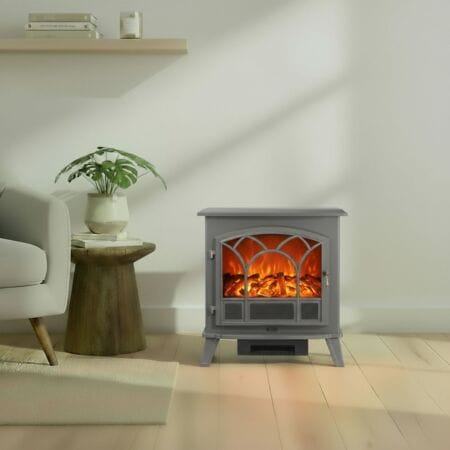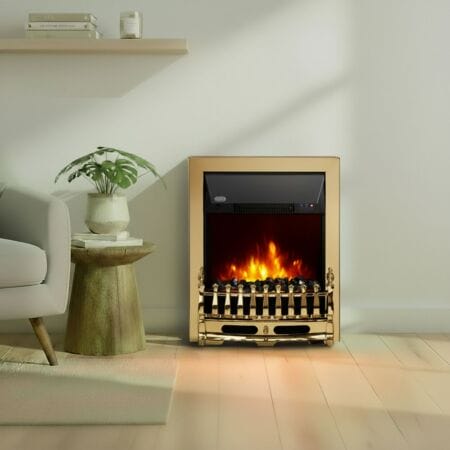Contents
ToggleWhat we'll cover...
An outline of the key smart heating features and the best ways to use them for lower energy bills.
How to reduce energy bills with smart heating
Heating your home should be simple: get warm, stay warm, don’t go bankrupt in the process. But as anyone who’s opened a winter energy bill with one eye shut can tell you – things add up fast when you’re heating inefficiently. As such, we wanted to outline the best smart features for cutting heating costs.
Essentially, smart heating features are clever tools that provide you with more control, flexibility, and insight into your heating habits than ever before. They’re like personal trainers for your boiler. But instead of telling it to drop and give 20 more, it motivates it to work smarter, rather than harder.
Whether you’ve already got a few smart devices set up, or you’re just wondering what all the fuss is about, here’s your key guide to the best smart features for cutting heating costs, without transforming your home into a Victorian parlour.
1. App-based heating control - Total power in your pocket
Let’s kick off with the most obvious upgrade: the smartphone app. This can switch your radiator control from “guesswork and swearing” to precise adjustments that can be made on demand.
Why it saves money:
- Remote access: Forgot to switch off the heating when you left the house? Do it from the car, the office, or your wherever you may be.
- On-the-fly edits: Alter schedules in an instant if plans change. No more heating an empty house because you nipped for a quick pint instead of straight home.
- Real-time feedback: Monitor what your system’s doing and where your heat is going.
BestHeating insight: Most smart thermostats (and many electric radiators) offer associated companion apps that are intuitive enough, and simple enough to operate, even for the tech-averse.
2. Geofencing - Heating that knows when you've left the building
This one feels like the future, and it works surprisingly well.
What is it?
Geofencing technology utilises your smartphone’s location settings to detect when you’ve left home and when you’re heading back there. From there, it automatically adjusts your heating accordingly.
The advantages:
- Switches off the heating when you leave, resulting in no wasted energy
- Turns it back on before you return to provide a cosy welcome
- No messing around with timers or remembering to button bash on your way out of the house
Translation: Less heat wasted means more money saved. Plus, you’ll won’t be heating up the unoccupied living room for little reason all day every day.
3. Zoned heating - Target heat, not the whole house
Heating your entire home to the same temperature is quite pointless in most cases. Usually, it will prove wasteful, chaotic, and leave someone moaning they’re too hot anyway.
Zoned heating offers:
- Room-by-room control
- Independent scheduling and temperature settings
- A chance to stop heating that unused room overflowing with unpacked Amazon parcels
What you need:
- Smart thermostats or thermostatic radiator valves (TRVs)
- An app or hub to connect everything
- Pre-planning to define your zones (by room, by floor, by usage)
BestHeating tip: Begin with key rooms that are used most often, such as the lounge and bedroom, then expand from there. You don’t need to zone the whole house all at once to feel the benefits.
4. Custom schedules - Set it once, save for life
Programming your heating isn’t the most glamorous of tasks, but it is highly effective.
Smart schedules allow:
- Different temperature settings at different times of the day
- Weekday vs weekend variations
- Smart responses to alterations (boost modes, hold settings etc.)
Example:
- 6:30am: Bedroom warms up gently before you wake
- 8:00am: Heating turns off as you leave the house
- 5:00pm: Living room begins to warm up
- 10:00pm: Temperature drops to an appropriate level for bedtime
Why it saves: The home is heated based in accordance with your lifestyle, rather than some outdated thermostat guesswork from when the Spice Girls were charting.
5. Smart thermostatic radiator valve (Smart TRVs)
Traditional TRVs are decent. Smart TRVs? They’re game-changers.
What makes them “smart”?
- App control assignment for each individual radiator
- Built-in temperature sensors for precise control
- Scheduling by radiator as opposed to room only
Why you’ll love them:
- Perfect for zoning without the need to rewire a full property
- Great for guest rooms, spare spaces, or bathroom areas
- Helps you avoid the classic “roasting in the lounge, freezing in the kitchen” scenario
Bonus: Smart thermostatic radiator valves can learn your routine and adjust automatically. Extra efficient.
6. Open window detection - Heating with a sixth sense
You’d be amazed how many people leave the window open while the heating is still turned on. Smart systems aren’t amazed – they’re programmed to notice the discrepancy.
How it works:
- Sudden temperature drop = system kicks into open window detection mode
- Radiator or system automatically pauses or shuts down
- You get a notification on your connected smartphone or device, and a gentle nudge to stop heating the garden
Why it saves money: It prevents you from kicking heat out of a 10-inch gap because someone wanted “a bit of fresh air”.
7. Weather compensation - Heating that dresses for the conditions
Rather than heating your house like it’s -10°C outside when it’s actually just a mild Tuesday, weather-compensating systems make real-time adjustments.
What it does:
- Reduces boiler flow temperature on warmer days
- Increases temperature levels when the cold hits
- Keeps indoor temperature consistent without burning additional fuel
Who benefits most: Homes with good insulation and modern boilers (especially combi or system models with modulating burners).
8. Usage reports & insights - See where you're burning cash
Knowledge is power. Or in this case, knowledge can result in lower energy bills.
What to expect:
- Weekly and monthly usage summaries
- Breakdown by zone, room, or individual radiators
- Insight and tips to reduce usage based on real data
Why it’s great: You can identify usage patterns – such as always overheating the bedroom or warming the whole house while you’re in the kitchen – and fix them accordingly to lower heating costs.
9. Learning thermostats - Predictive comfort that works
These clever thermostats utilise algorithms (along with a touch of digital wizardry) to learn your routine and optimise heating times.
Features:
- Learns when you’re at home, when you’re not, and the typical time periods when you like it warm
- Automatically alters schedules over time
- Some models can track how long your house takes to heat up, and when it starts to lose temperature
Result: A system that provides smarter heating than you would on your own, whilst saving energy in the process.
Want to adjust the heating without having to lift a finger? Smart integrations using voice controls with Alexa, Google Assistant and Apple HomeKit make it effortless.
Example commands:
- “Alexa, turn the bedroom down to 17.”
- “Hey Google, boost the lounge radiator for 30 minutes.”
- “Siri, make it warmer – I can’t feel my toes.”
Add automations to sync heating with:
- Lighting schedules
- Occupancy sensors
- Smart plugs and routines
Minimal effort for maximum control.
Common smart heating pitfalls to avoid
Even the best smart features can backfire if you go rogue with them.
Avoid:
- Over-scheduling the heating in every room like you’re running a hotel
- Cranking it up to an excessive temperature (like 30 degrees plus) when it’s cold – it won’t heat faster!
- Ignoring app software updates – they fix bugs and help save energy
- Creating scheduled settings you won’t use (are you really going to need “party mode” at 3am in the utility room?)
Focus on setting up a smart heating system that helps your home run smoother and your bills run lower. That’s real smart.
Home heating isn’t just about staying warm. In modern times especially, it’s about staying smart as well. That means cutting waste, embracing control, and making use of the smart technology that works for your life and routine – not the other way around.
From smart TRVs to predictive scheduling, the features above aren’t gimmicks; they’re genuinely useful modern smart heating measures to trim bills, decrease energy waste, and keep your house toasty warm without burning through your budget.
So, whether you’re upgrading your whole system or starting small with a few savvy tweaks, remember that a switch to smart heating represents a smarter living choice. Your quick guide to smart heating systems & automation has further details on all the benefits smart heating solutions can provide.
Let us know how your smart heating setup is made up in the comments, or reach out to us on Instagram, Facebook or X.
John is a Research Specialist for the Best Heating Advice Centre, where for over nine years he has dedicated himself to demystifying home heating for our customers. He specialises in creating clear, data-driven guides and how-to articles by collaborating directly with our team of certified heating experts and product engineers.
His work, built on a foundation of journalistic research, has helped millions of readers make confident and informed decisions about their home heating. When he’s not breaking down the heat output differentials from radiators to heated towel rails, John fancies himself as a fine football and music connoisseur.










